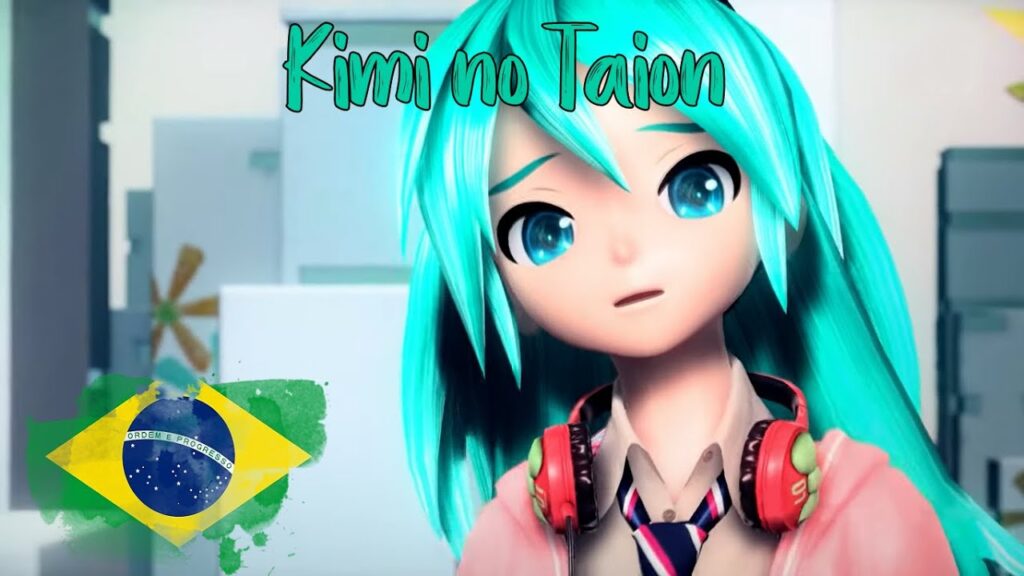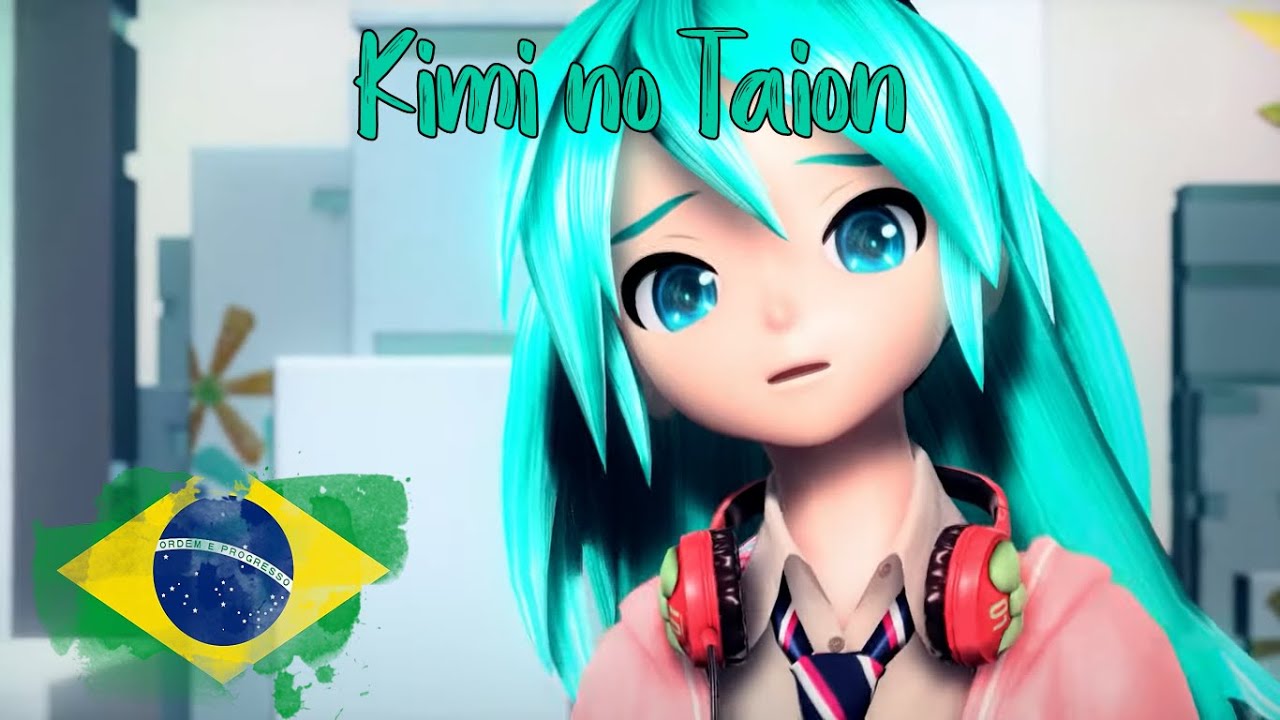
Brazilian Hatsune Miku: Exploring the Fandom and Cultural Fusion
Hatsune Miku, the globally recognized virtual pop star, has transcended her Japanese origins to captivate audiences worldwide. Among her diverse international fanbases, the Brazilian community stands out for its unique and vibrant interpretations of the digital diva. This article delves into the fascinating phenomenon of the Brazilian Hatsune Miku fandom, exploring its cultural nuances, creative expressions, and the ways in which it blends Japanese and Brazilian identities.
The Global Appeal of Hatsune Miku
Hatsune Miku’s appeal lies in her open-source nature and the collaborative spirit surrounding her creation. Crypton Future Media, the company behind Miku, encourages fans to create their own music, art, and animations featuring the character. This has resulted in a vast and diverse library of content, making Miku a truly global phenomenon. Her virtual concerts, featuring stunning visuals and fan-created songs, draw massive crowds both in-person and online.
The concept of a virtual idol resonates particularly well in the digital age, where identity and representation are fluid and constantly evolving. Miku offers a blank canvas for fans to project their own aspirations and creativity, fostering a strong sense of community and belonging.
The Rise of Brazilian Hatsune Miku Fandom
Brazil’s vibrant cultural landscape and passionate fanbase have embraced Hatsune Miku with open arms. The Brazilian Hatsune Miku community has grown steadily over the years, fueled by online forums, social media groups, and dedicated events. What sets the Brazilian fandom apart is its unique blend of Japanese and Brazilian cultural elements.
Cosplay and Fan Art
Cosplay is a prominent form of expression within the Brazilian Hatsune Miku fandom. Brazilian cosplayers often incorporate elements of Brazilian culture into their Miku costumes, such as incorporating traditional fabrics, accessories, or even creating samba-inspired versions of Miku’s iconic outfit. This fusion of cultures is a testament to the creativity and ingenuity of the Brazilian fanbase. Fan art also plays a significant role, with artists creating stunning illustrations and animations that reimagine Miku in a Brazilian context.
Music and Dance
Music and dance are integral parts of Brazilian culture, and these elements are also reflected in the Brazilian Hatsune Miku fandom. Brazilian musicians and producers have created remixes and original songs featuring Miku, often incorporating Brazilian rhythms and melodies. Dance groups perform Miku-inspired choreography, blending traditional Brazilian dance styles with Miku’s signature moves. The energy and passion of these performances are infectious, showcasing the vibrancy of the Brazilian fanbase.
Community Events and Gatherings
The Brazilian Hatsune Miku community comes together at various events and gatherings throughout the year. Anime conventions, cosplay competitions, and Miku-themed parties provide opportunities for fans to connect, share their creations, and celebrate their shared love for the virtual pop star. These events are often characterized by a strong sense of camaraderie and mutual support, fostering a welcoming and inclusive environment for all fans.
Cultural Fusion and Identity
The Brazilian Hatsune Miku fandom represents a fascinating example of cultural fusion. By incorporating elements of Brazilian culture into their interpretations of Miku, fans are not only celebrating their love for the character but also expressing their own unique identities. This fusion of cultures creates a rich and dynamic tapestry, showcasing the power of global fandoms to transcend geographical boundaries and cultural differences.
The phenomenon of Brazilian Hatsune Miku also raises important questions about cultural appropriation and adaptation. While some may argue that incorporating Brazilian elements into Miku’s image constitutes cultural appropriation, others view it as a form of cultural exchange and appreciation. The key lies in respecting the original source material while also acknowledging and celebrating the unique contributions of the Brazilian fanbase. It is a dialogue, a conversation through art, music, and performance, that adds layers of meaning to the Brazilian Hatsune Miku phenomenon. Understanding the nuances of this cultural exchange is crucial to appreciating the depth and significance of the fandom.
The Impact of Brazilian Hatsune Miku
The Brazilian Hatsune Miku fandom has had a significant impact on both the local and global Miku community. It has brought attention to Brazilian culture and creativity, showcasing the talent and passion of Brazilian artists and performers. It has also inspired other international fanbases to explore their own cultural interpretations of Miku, fostering a greater sense of diversity and inclusivity within the global fandom.
The vibrant and creative energy of the Brazilian Hatsune Miku community serves as a testament to the power of fandoms to unite people across cultures and backgrounds. It demonstrates how a virtual pop star can become a symbol of cultural exchange and self-expression, fostering a sense of community and belonging among fans worldwide. The Brazilian Hatsune Miku phenomenon is a shining example of how global fandoms can enrich and diversify our understanding of culture and identity. The influence of the Brazilian Hatsune Miku fanbase continues to grow, pushing boundaries and inspiring creativity within the broader Hatsune Miku community. The dedication and passion of these fans are truly remarkable.
Furthermore, the Brazilian Hatsune Miku scene has contributed to the visibility of Brazilian artists and creators on a global scale. By showcasing their talents through Miku-related content, they have gained recognition and opportunities that might not have been available otherwise. This cross-cultural exchange benefits both the Brazilian Hatsune Miku community and the larger Miku fandom, fostering a sense of mutual appreciation and respect.
The Future of Brazilian Hatsune Miku
The future of the Brazilian Hatsune Miku fandom looks bright. As technology continues to evolve and the virtual world becomes increasingly integrated into our lives, the opportunities for creative expression and cultural fusion will only continue to grow. The Brazilian fanbase is poised to play an even greater role in shaping the future of Hatsune Miku, contributing their unique perspectives and talents to the global community.
The continued growth of the Brazilian Hatsune Miku community will likely lead to even more innovative and exciting projects, from collaborative music productions to large-scale cosplay events. The passion and dedication of the Brazilian fanbase are sure to drive the fandom forward, ensuring that Brazilian Hatsune Miku remains a vibrant and influential force within the global Miku community. It’s a testament to the power of music, art, and community to transcend borders and bring people together.
In conclusion, the Brazilian Hatsune Miku fandom is a vibrant and dynamic community that exemplifies the power of cultural fusion and global fandoms. By incorporating elements of Brazilian culture into their interpretations of Miku, fans are not only celebrating their love for the character but also expressing their own unique identities. The future of Brazilian Hatsune Miku looks bright, with endless possibilities for creative expression and cultural exchange. The story of Brazilian Hatsune Miku is a testament to the global reach of a digital icon and the boundless creativity of her fans. The Brazilian Hatsune Miku community continues to thrive, showcasing the power of fandom to connect people and celebrate cultural diversity. The phenomenon of Brazilian Hatsune Miku is a compelling example of how global fandoms can enrich and diversify our understanding of culture and identity. The ongoing evolution of Brazilian Hatsune Miku promises even more exciting developments in the years to come.
[See also: Hatsune Miku Concert Review]
[See also: The Evolution of Virtual Idols]
[See also: Cosplay Culture in Brazil]

